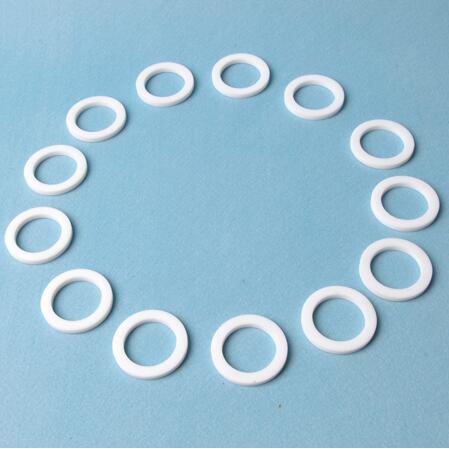
Contact us
- ADD: Xiangyue Road, (Xiang'an) Industrial Park, Torch High-Tech Zone, Xiamen, Fujian, China (Mainland)
- TEL: 0086-592-5691096
- FAX: 0086-592-5681387
- E-mail: Paul@chiefptfe.com, chiefptfe@hotmail.com



PTFE O-Ring
- Product description: PTFE O-Ring
Product introduction
PTFE O-Rings are closed,circular rings with annular cross section. The dimensions are - as with the elastomer O-Ring -
characterised by the inside diameter ID and the cord diameter W (Figure ).PTFE O-Rings are not moulded but produced by machining. The rings can therefore be manufactured in all sizes.
Advantages:
- Very good chemical resistance, compatible with most liquids and chemicals, with the exception of liquid alkaline metals and some fluorine compounds.
- Wide temperature range from approx. - 200°C to + 260°C
- Suitable for contact with foodstuffs, pharmaceutical and medicinal products
- Physiologically safe, can be sterilised
- Low friction, no adhesion
- Available for all diameters up to approx. 1,900 mm.
Fields of application
Teflon O Rings are used wherever the chemical and thermal resistanceof the normal elastomer O-Rings is no longer sufficient.
These are primarily applications in the chemical industry, foodstuffs industry, pharmaceuticals and medical technology. Teflon
O-Rings are used only as static seals, e.g. on flange connections, on covers, etc.
Working pressure: Up to 40 MPa
Temperature: - 200°C to + 260°C
Media: Practically all liquids, gases and chemicals
Design recommendations
PTFE O Rings have low elasticity. The O-Ring size should therefore be chosen to suit the nominal diameter (rod or bore) to be scaled. Installation in axial easily accessible and radial split grooves is to be preferred.
The general information on the construction, design and surfaces given for the elastomer O-Rings applies also to PTFE O-Rings.
Methods of installation
PTFE O-Ring can only be stretched or compressed to a very limited extent during installation.During installation, e.g. on flanges, the cold flow tendency of the thermoplastic PTFE should be taken into consideration. Under pressure, PTFE deforms plastically also in the cold state,i.e. apermanent deformation takes place. If flange seals are not tightened sufficiently to give metal/metal contact,the elastic deformation and thus the elastic tension can deteriorate.




